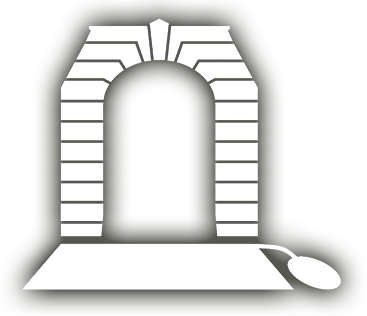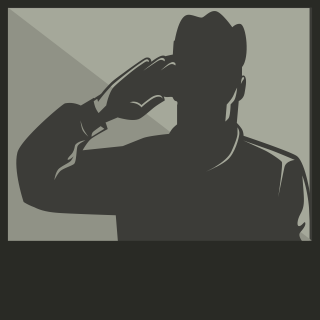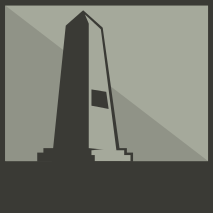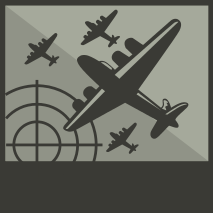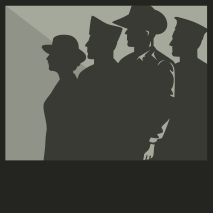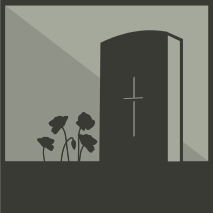
CARR, Howard Bevan
| Service Number: | 2275 |
|---|---|
| Enlisted: | 26 November 1914, Oaklands, South Australia |
| Last Rank: | Lieutenant |
| Last Unit: | 50th Infantry Battalion |
| Born: | Mount Lofty, South Australia, 28 July 1896 |
| Home Town: | Unley, Unley, South Australia |
| Schooling: | St Peter's College, Adelaide University, South Australia |
| Occupation: | Medical Student |
| Died: | Killed In Action, Zonnebeke, ANZAC Ridge, Belgium, 26 September 1917, aged 21 years |
| Cemetery: |
No known grave - "Known Unto God" |
| Memorials: | Adelaide National War Memorial, Australian War Memorial Roll of Honour, Hackney St Peter's College Fallen Honour Board, Menin Gate Memorial (Commonwealth Memorial to the Missing of the Ypres Salient), Unley Arch of Remembrance, Unley St. Augustine's Church Roll of Honour, Unley Town Hall WW1 Honour Board |
World War 1 Service
| 26 Nov 1914: | Enlisted AIF WW1, Private, 2275, Oaklands, South Australia | |
|---|---|---|
| 20 Mar 1915: |
Involvement
AIF WW1, Private, 2275, 1st Stationary Hospital (AIF), Enlistment/Embarkation WW1, --- :embarkation_roll: roll_number: '23' embarkation_place: Melbourne embarkation_ship: HMAT Shropshire embarkation_ship_number: A9 public_note: '' |
|
| 20 Mar 1915: | Embarked AIF WW1, Private, 2275, 1st Stationary Hospital (AIF), HMAT Shropshire, Melbourne | |
| 13 Jun 1915: | Involvement AIF WW1, Private, 2275, 1st Stationary Hospital (AIF), ANZAC / Gallipoli | |
| 20 Mar 1916: | Involvement AIF WW1, Private, 2275, 1st Australian Casualty Clearing Station | |
| 30 Mar 1917: | Promoted AIF WW1, Second Lieutenant | |
| 30 Apr 1917: | Involvement AIF WW1, Second Lieutenant, 50th Infantry Battalion | |
| 29 Jul 1917: | Promoted AIF WW1, Lieutenant, 50th Infantry Battalion | |
| 26 Sep 1917: | Involvement AIF WW1, Lieutenant, 50th Infantry Battalion, Polygon Wood, --- :awm_ww1_roll_of_honour_import: awm_service_number: awm_unit: 50 Battalion awm_rank: Lieutenant awm_died_date: 1917-09-26 | |
| 26 Sep 1917: | Involvement AIF WW1, Lieutenant, 50th Infantry Battalion, Polygon Wood |
Help us honour Howard Bevan Carr's service by contributing information, stories, and images so that they can be preserved for future generations.
Add my storyBiography contributed by Sharyn Roberts
Excerpt from Blood Sweat and Fears: Medical Practitioners and Medical Students of South Australian who Served in World War 1. Courtesy of the Authors
Howard Bevan Carr was born on the 28th July 1896 at Stirling West, Mt Lofty, eldest son of Dr. Hampden Carr and Emmie Bevan, nee Cooper. He was educated at St Peter’s College and was believed to have been accepted to study medicine at the University of Adelaide.
Carr enlisted in the AIF at Oaklands Camp Adelaide on the 26th November 1914, just before he started studying at the University of Adelaide. He had 2 years of previous senior cadet training and served 1 year in the “C “Coy 78th Infantry. He was 18 years old, 6ft, and 174lbs, of dark complexion, dark brown hair and brown eyes. His father Dr Hampden Carr of “Roma”, 30 Unley Rd, Unley was named as his next of kin. He was provisionally appointed Sergeant in the AAMC Base Depot and was posted in March 1915 entraining to Melbourne to the 1 ASH, 2nd reinforcement in Lemnos in June. He went to the 1 ACCS as a Private. He served in the Lowland CCS and Hospital ships throughout 1916 and in December transferred to Trinity College, Cambridge for Officer training with promotion to 2nd lieutenant in April 1917, then proceeded to France on the 24th April 1917 and taken on strength of the 50th Bn. He was promoted to lieutenant in July.
Howard Bevan Carr was killed in action on the 26th September 1917 near Zonnebecke in Belgium. He was 21 years old. His name is on the Ypres Menin Gate Memorial. His father was issued with his 1914-15 Star, British War Medal and the Victory medal. The Memorial Scroll and King’s Message was delivered to his family in August 1921 and the Memorial Plaque in January 1923. His name is also in the St Peter’s College Memorial Hall and on the plaque in the cloisters at the entrance to the large quadrangle at St Peter’s. His brother Kevin Hampden Carr (1899-1977) was born in Moonta on the 21st January 1899. He served in the Flying Corps in England in WW1 and the RAAF in WW2
Biography
Son of Hampden CARR and Emmie Bevan nee COOPER
From the book Fallen Saints
Howard Bevan Carr of Unley was born at Mount Lofty South Australia in 1896 and attended St Peter's College 1909-1914 and at the time of enlistment was still a student. He enlisted at Oaklands Park on 26 November 1914, and because he had served two years in the senior cadets at the School and a year in C Company, 78th Infantry he was made a provisional sergeant in Medical Corps on 1 February.
He joined and sailed from Melbourne with the 2nd quota of reinforcement for the 1st Australian Stationary Hospital aboard HMAT Shropshire on 20 March.
He joined his unit at Lemnos on 13 June, and after being admitted to hospital with Influenza in July was evacuated to the Lowlands Casualty Clearing Station, ANZAC Base in December and then back to Egypt.
In March1916, he joined the reinforcements 1st Australian Casualty Clearing Station at Ismailia and nine days later boarded the SS Corsican bound for France. After disembarking at Marseilles on 3 April, he joined his unit and then in December went to England.to undergo officer training at No 5 Officer Cadet Battalion in Cambridge. He graduated at the end of March 1917 and returned to France. Second Lieutenant Carr was taken on the strength of the 50th Battalion on 30 April and promoted to Lieutenant at the end of July while in Belgium.
Twenty one year old Lieutenant Howard Carr was killed on 26 September while attempting to silence a reinforced concrete pillbox containing a number of German machine gunners.
In a letter to Howard’s parents, Corporal Alfred South described the circumstances leading up to their son’s death.
Without any apparent thought of the danger to himself, Howard rushed forward to silence this post and, when close to this objective, was shot down by machine gun bullets. His end I believe was instantaneous, and he was buried not far from here where he so gallantly fell. [i]
Corporal South was on another flank when Carr was killed but stated had been given the information by several men in Howard’s platoon.
Witness Statements [ii]
In early October 1917 Private William Keogh told the Red Cross interviewing officer that Lieutenant Carr was in B Company and described him as very tall and thickset. He said ‘I saw him wounded in front of the first blockhouse we came to on September 26th in an attack in front of Zonnebeke. I think it was a machine gun bullet from this blockhouse that got him. I saw him in a shell hole wounded and I heard him call out for help. I was the Major’s runner and had to go on. We gained and held our objective. News came through to the battalion afterwards that he had died of wounds at a C.C.S. but I do not know which.’
Private Keogh’s description and knowledge of his background shows he knew Lieutenant Carr well, Howard was 185.5 centimetres tall, had been a sergeant, served in a Casualty Clearing Station and was promoted at the end of July.
When interviewed at 2nd Australian General Hospital in November 1917 Private Wilfred Kelly said his officer (Carr) ‘was killed instantly by Machine Gun bullets during the attack on ANZAC Farm, Ypres, at about ten minutes after we had gone over at 6.15 in the morning. I know he was buried in the open near where he fell but I have not seen the grave.’
In November 1917 Private Herman Engel, said Carr was wounded at about 6.10 a.m. on 26 September. He said some of the men in the company claimed he had given them his pay book and told them to fetch the stretcher bearers. ‘That was the last seen of him. He was hit by a sniper when attacking a strong post. I think he must have been hit again by a shell. There was no news of him on October 10th when I left the Battalion.’
Stretcher Bearer Oliver Eatts interviewed in December 1917 said they attacked a little after 6 in the morning on 26 September with their objective being Tokio Ridge. ‘ About 400 yards from where we came over, I saw Lieutenant Carr killed outright by a machine gun bullet fired from a Pill-box. Enquiries were made afterwards of the Company stretcher-bearers as to whether we had seen his body. The common idea is that a shell buried him. The shell fire was very heavy.’
During an interview at Havre Hospital in January 1918 Private Thomas Hewett said he was about two yards from Lieutenant Carr when they were attacking on 26 September. He said he saw Carr fall as a result of being shot somewhere in the chest. ‘I heard him say, ‘Come on, come on!’ He said Private James of 7 Platoon, B Company, who was up the line when he left on 16 December, had told him he ‘went to look for Lieutenant Carr afterwards, but could find nothing of him whatever.’
[i] Freeman, R R, Hurcombe’s Hungry Half Hundred, Peacock Publications 1991, p. 113
[ii] Australian War Memorial, Australian Red Cross wounded and missing enquiry bureau files, Carr, Howard Bevan / 0690911, viewed 15 November 2005

